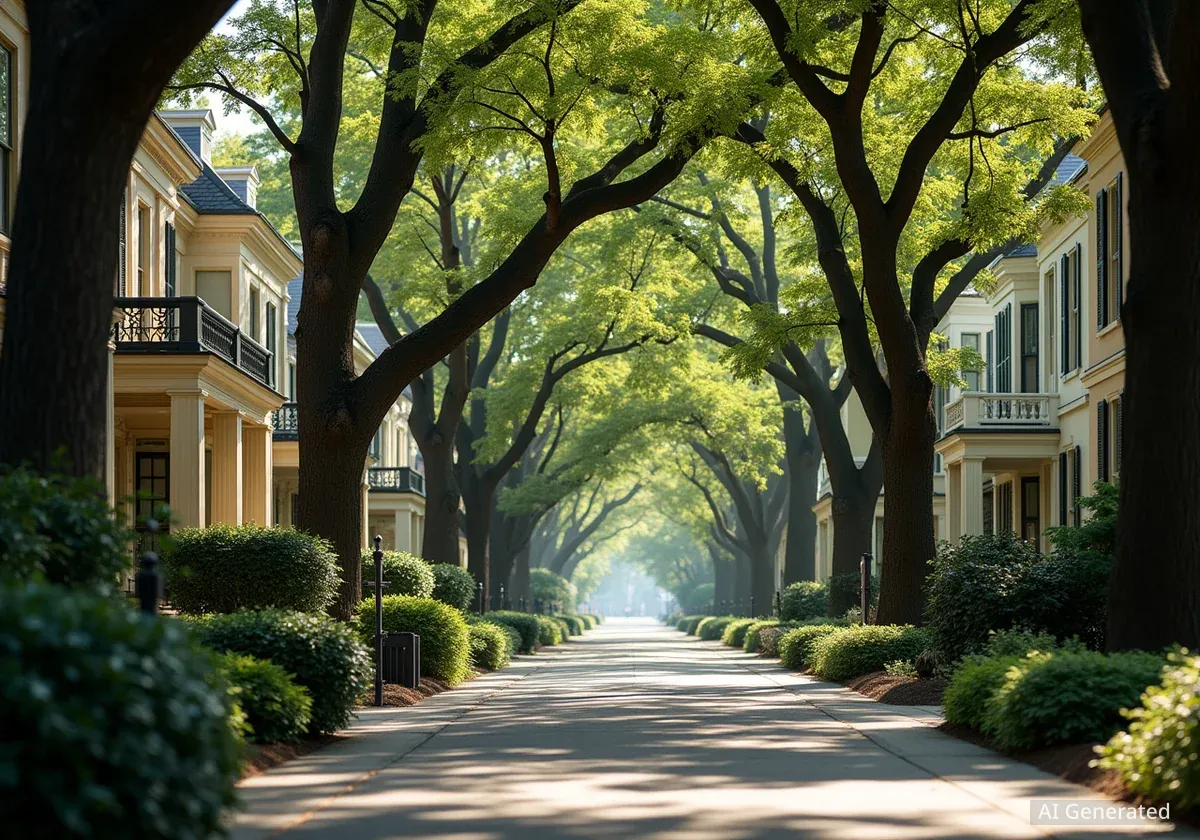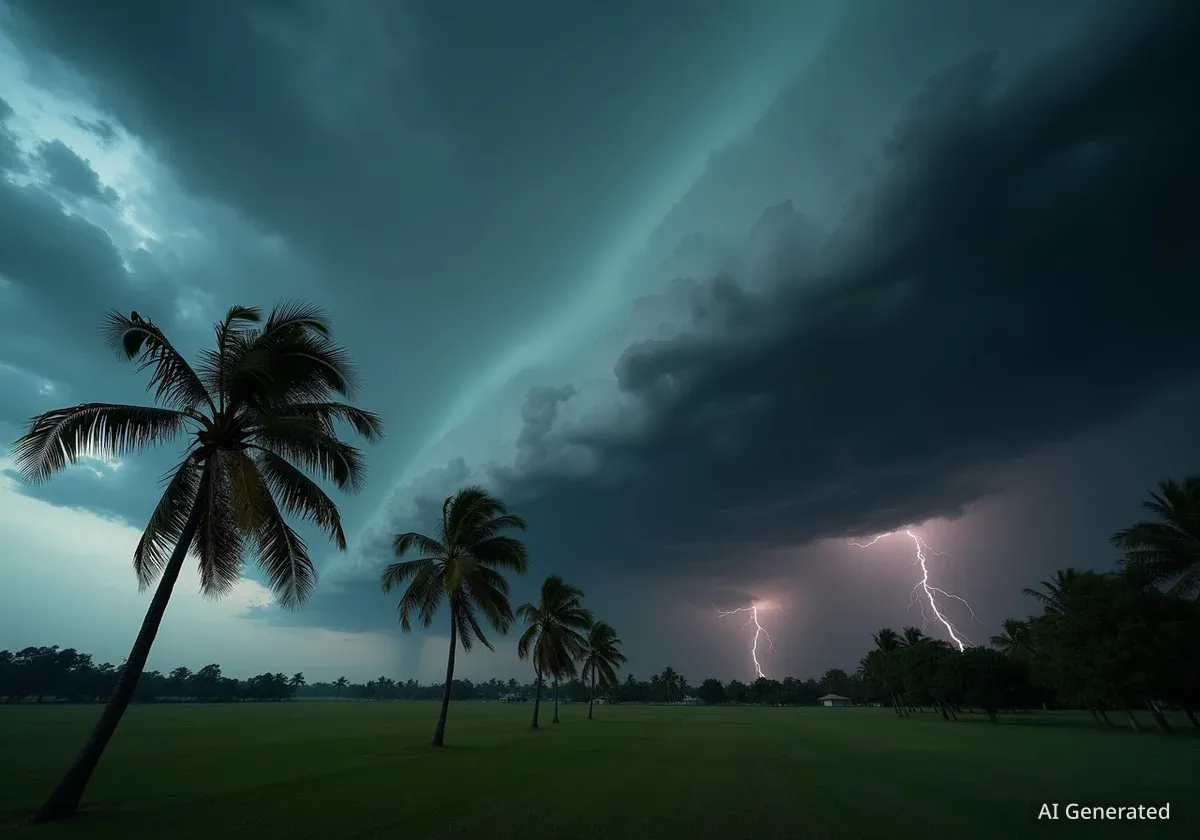Ashton Heights, a neighborhood in Arlington, Virginia, actively works to protect its unique architectural identity and tree canopy. Unlike many areas experiencing rapid redevelopment, this centrally located community uses an official architectural guide and local efforts to maintain its historical character and green spaces, even as property values rise.
Key Takeaways
- Ashton Heights has an official architectural guide to preserve its historic styles.
- The neighborhood is listed on the National Register of Historic Places since 2003.
- Residents are actively involved in preserving the old-growth tree canopy.
- Property values in Ashton Heights range from $1.13 million to $3.395 million for recent sales.
- The community fosters strong neighborly bonds and a sense of extended family.
Protecting Architectural Heritage
Ashton Heights stands out among Arlington neighborhoods for its commitment to preserving its architectural past. Since 2007, an official architectural guide has provided specific instructions for new construction and renovations. This guide ensures that bungalows, American foursquares, and Tudor and Colonial revival homes retain their original look and feel.
This approach helps Ashton Heights maintain its century-old history. It contrasts with trends in other parts of Arlington, where rising property values often lead to teardown projects. The neighborhood's dedication to its historic fabric is a key aspect of its identity.
Historic Designation
- Named for real estate agent Ashton Jones, who acquired the land in 1919.
- Added to the National Register of Historic Places in 2003.
- Covers 61 original acres.
Central Location and Community Appeal
Ashton Heights is positioned near major transit and shopping centers like Ballston and Virginia Square. This location makes it convenient for residents. Many feel that essential amenities are within a 15-minute walk.
Heather Schildge, a resident since 1999, highlighted the neighborhood's appeal. She and her husband were drawn to the area after extensive house hunting. They valued the ease of access to services and the visual charm of the community.
"What drew us to the neighborhood, in part, was the beautiful tree canopy, the diversity of older houses," Schildge said. "Aesthetically, it's a lot of fun just to see, to walk around the neighborhood and observe."
Schildge's own home, a Sears-style bungalow with a large front porch, solidified her decision. Her connection to the neighborhood deepened through her volunteer work to preserve its natural beauty.
Efforts to Preserve the Tree Canopy
The neighborhood's old-growth tree canopy is a significant feature. However, new building projects have reduced some of these older trees. Residents like Heather Schildge are now actively working to reverse this trend.
Schildge’s involvement began after a large silver maple tree in her own yard was lost. This experience inspired her to join the tree preservation efforts. The community aims to plant 120 native trees this year.
Funding for Green Initiatives
The tree planting initiative receives support from a grant provided by the Virginia Department of Forestry. This funding helps the Ashton Heights Civic Association's committee achieve its goals.
Linda Scott, another member of the Ashton Heights Civic Association’s tree canopy preservation committee, also found her way to this work through her own landscaping efforts. Her brick Cape Cod home, built in the early 1930s, has been her residence since 1986.
"We could do better at saving some of these 100-year-old giants, these magnificent creatures," Schildge stated. "We need to think about what we envision for the future in the neighborhood, and that’s where planting trees comes in."
Strong Community Bonds and Social Life
The shared commitment to preserving the neighborhood extends to community spirit. Residents often look out for each other, creating a supportive environment. This was particularly evident during the COVID-19 pandemic.
Linda Scott described how neighbors supported each other during the pandemic. They held distanced Friday night "happy hours" in their yards and gathered in the street. This fostered a sense of extended family among residents.
"People who are here are mostly kind of aligned on an awful lot of stuff, like basic values, like safety of children, you know, making a better world," Scott explained. "Everybody recycles. Everybody helps out with the mail. It’s kind of like an extended family."
Scott Sklar, the longtime Civic Association President, started a popular tradition during the pandemic: free outdoor whiskey tastings. These events continue on weekends in his driveway. They attract dozens of residents, showcasing the neighborhood's diverse and welcoming atmosphere.
Real Estate Market and Diverse Housing Options
Ashton Heights offers a variety of housing types. These include single-family detached homes, semi-detached houses, townhouses, duplexes, and rowhouses, alongside apartments. This mix caters to different preferences and needs.
Local real estate agent Natalie Roy provided insights into recent market activity. In the past year, 15 houses were sold in Ashton Heights. Prices varied significantly based on size, age, and features.
- A renovated 1940s brick colonial, measuring 1,404 square feet, sold for $1.13 million.
- A modern, bungalow-inspired home from 2011, nearly 7,400 square feet, sold for $2.875 million.
Currently, four single-family houses are on the market. Their list prices range from $2.75 million to $3.395 million. These properties are generally newer constructions, reflecting ongoing demand for updated homes in the area.
Current Listings
- Four single-family homes available.
- Prices between $2.75 million and $3.395 million.
- Most are relatively new builds.
Unbeatable Location and Amenities
Natalie Roy, who lives in a 1923 bungalow in nearby Lyon Park, emphasizes the prime location of Ashton Heights. Residents have easy access to a range of amenities. These include popular restaurants in Ballston, extensive running and biking trails, and Arlington’s Museum of Contemporary Art on Wilson Boulevard.
The museum regularly hosts exhibits and public events, adding to the cultural offerings. Roy highlights that while a house can be changed, its location cannot. This makes Ashton Heights particularly desirable due to its proximity to many desirable features.
"You can always change a house. You can’t change a location," Roy noted. "Regardless of where you are in Ashton Heights, you’re close to some amenity, some wonderful feature."
A Lifelong Home for Residents
For George and Rita O’Brien, Ashton Heights has been a "happy place" for their entire lives. They live in the house George’s parents purchased from developer Ashton Jones in 1934. Even after moving out of the neighborhood for a period, their strong affection for the area brought them back.
The O'Briens value their neighbors greatly. They describe a deep sense of community and mutual support. This long-standing connection underscores the neighborhood's enduring appeal.
"We have the best neighbors in the world," Rita O’Brien shared. She added that her adult son "relaxes, knowing we’re here with these people." "They’re always here for us," she concluded, "And we hope we’re there for them as well."
The boundaries of Ashton Heights are clearly defined. To the north, it is bordered by Wilson Boulevard and 10th Street North. North Glebe Road forms its western boundary, while Arlington Boulevard lies to the south. North Irving Street marks the eastern edge.
Local Education and Transportation
The neighborhood is served by several schools. These include Alice West Fleet Elementary, Long Branch Elementary, and Escuela Key Elementary (Immersion). Students attend Thomas Jefferson Middle School and either Wakefield High or Washington-Liberty High School.
For transportation, residents have convenient access to Metro stations. The Virginia Square-GMU and Ballston-MU Metro stations, both on the Orange and Silver lines, are located just a few blocks north of the neighborhood. Numerous bus lines also serve the Ballston-MU station, providing extensive public transit options.





